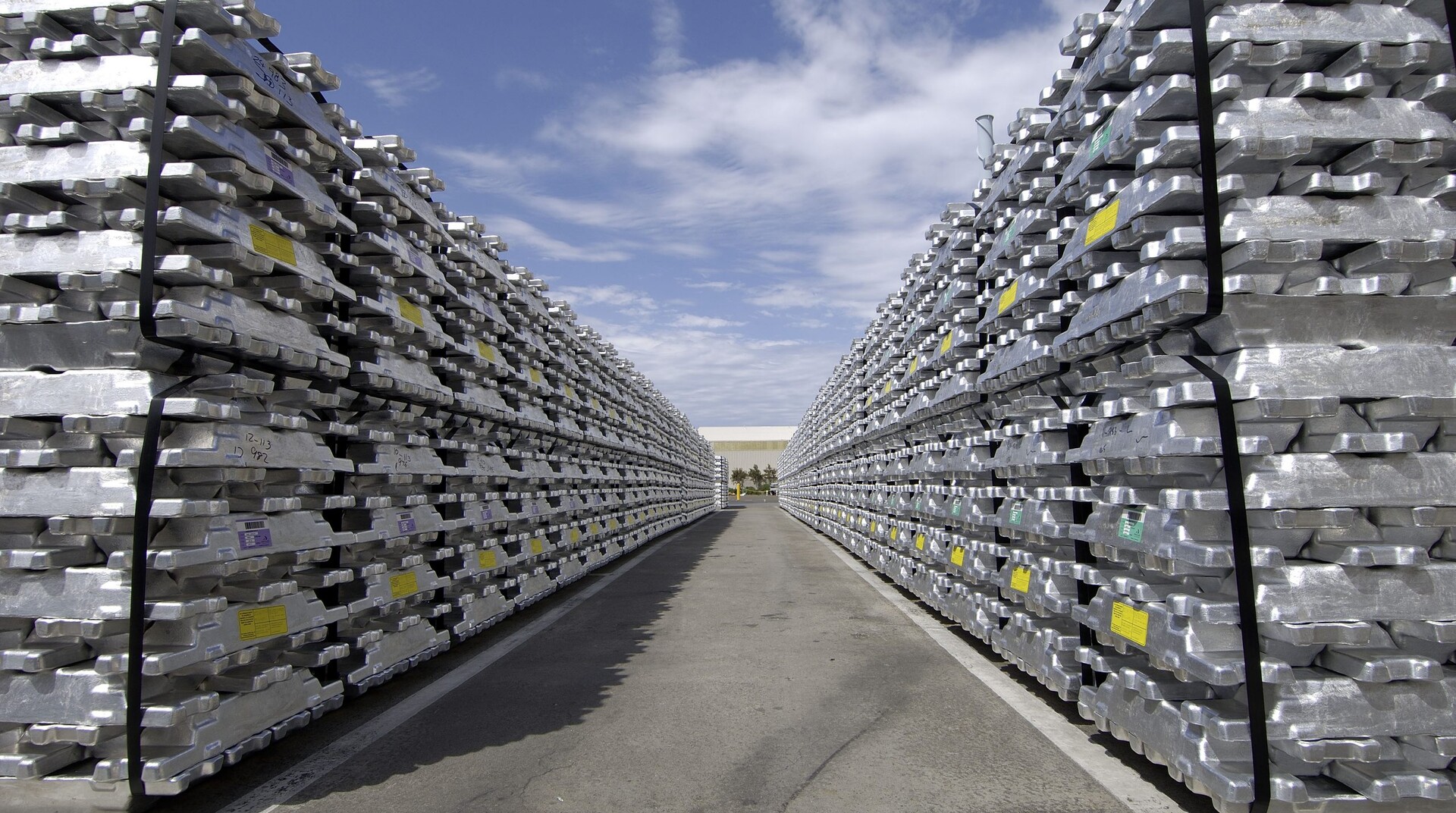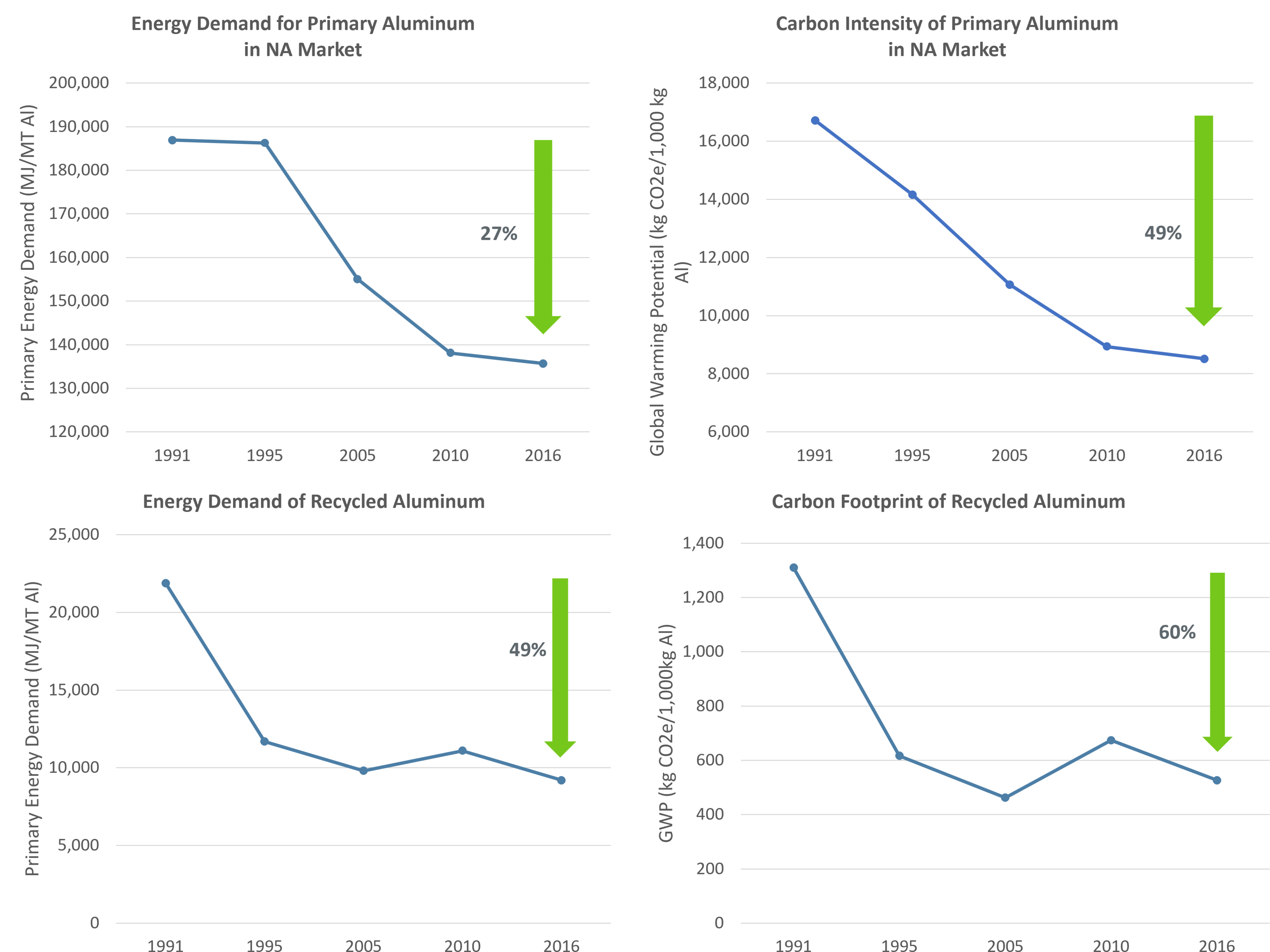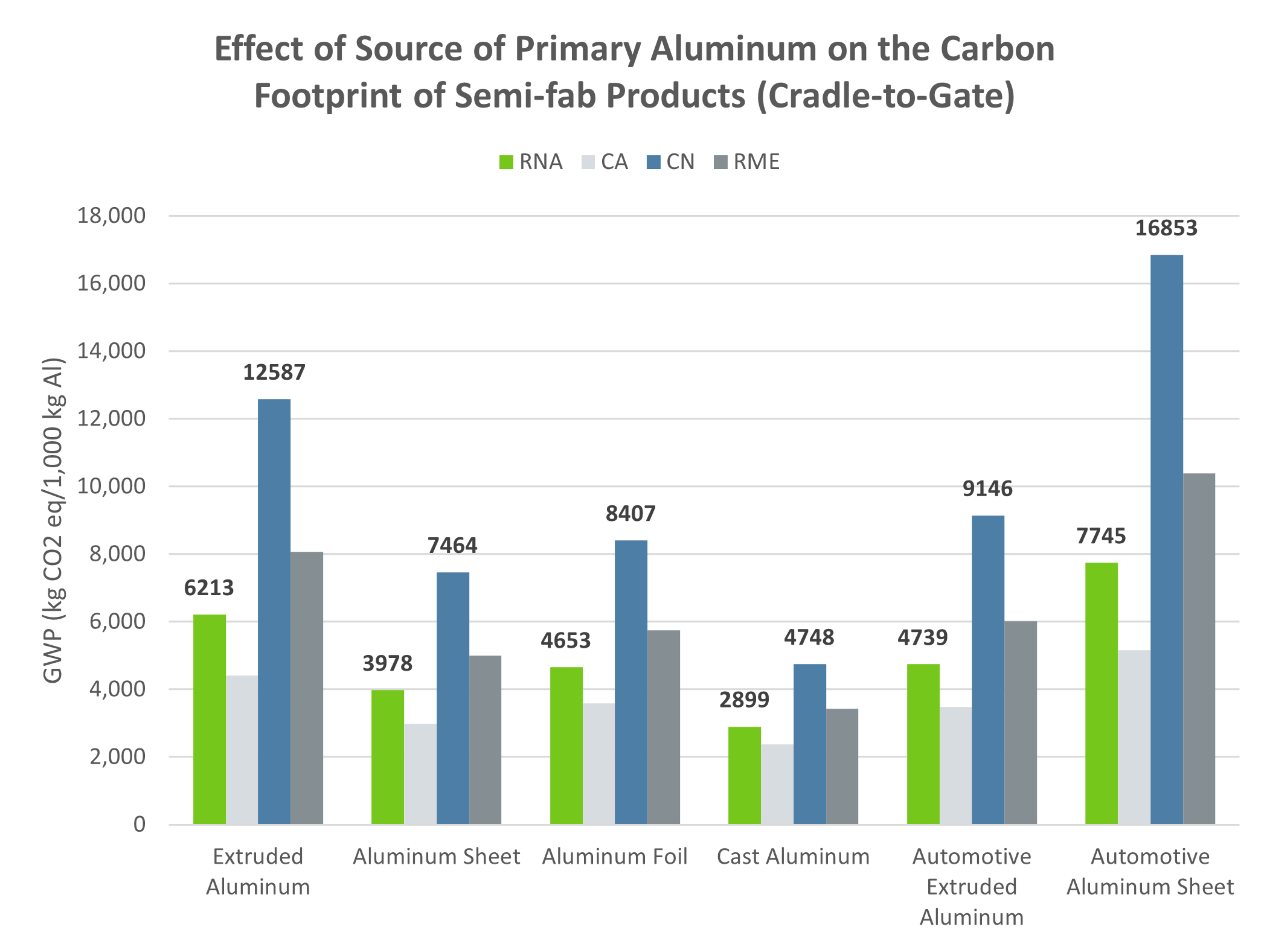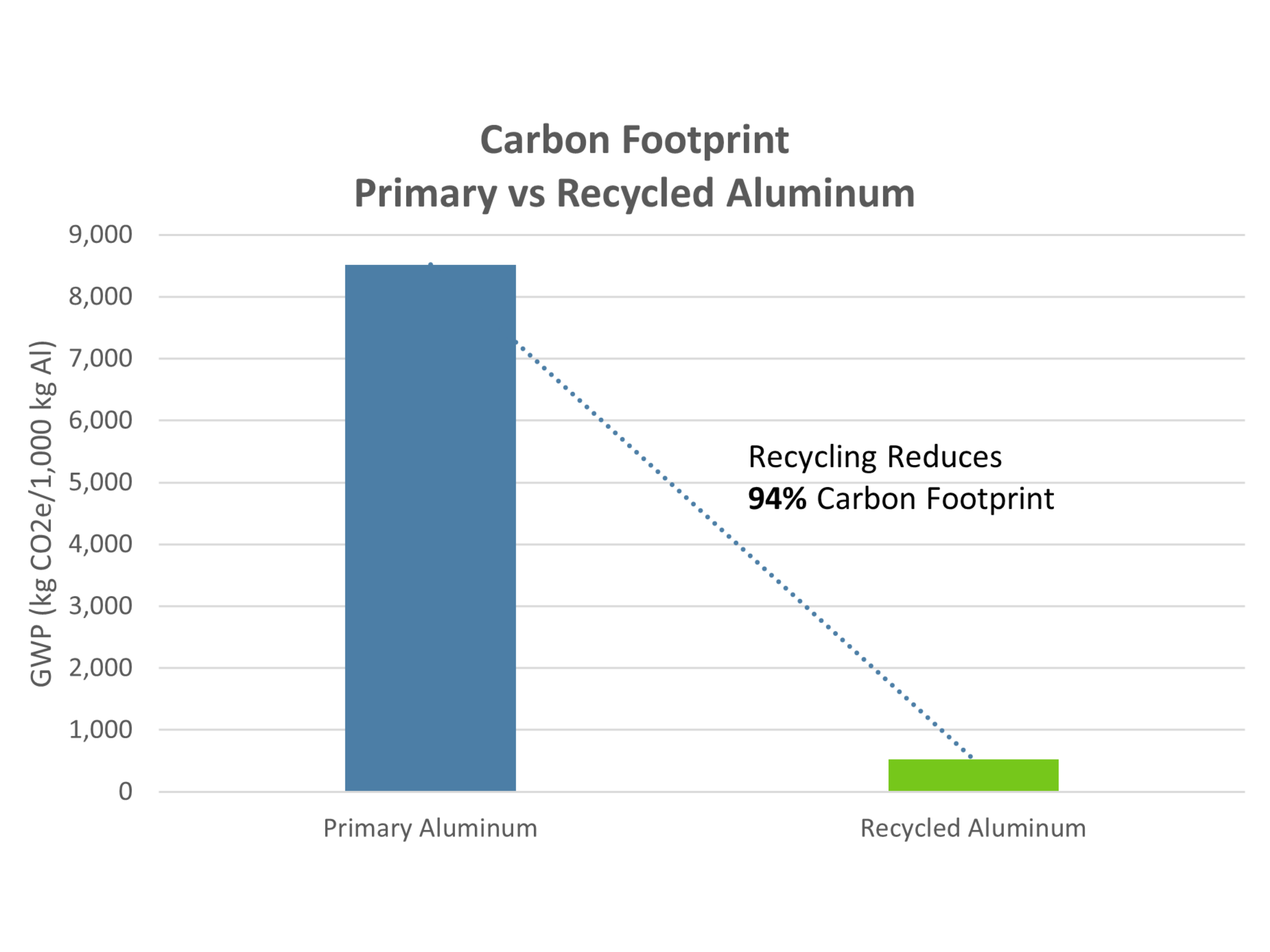
Aluminum Carbon Footprint Cut in Half Over 30 Years
A brand-new, third-party critical-reviewed life cycle assessment (LCA) report found that since 1991, the carbon footprint of primary aluminum production declined by 49% while the footprint of recycled aluminum production dropped by 60%.
A More Sustainable Industry

A brand-new, third-party critical-reviewed life cycle assessment (LCA) report shows that the energy and carbon impact of aluminum production in North America has dropped to its lowest point in history. Since 1991, the carbon footprint of primary aluminum production declined by 49% while the footprint of recycled aluminum production dropped by 60%. During the same time period, the energy needed to produce primary and recycled (or secondary) aluminum has dropped by 27 and 49%, respectively. Between 2010 and 2016 alone, the carbon footprint of aluminum production (primary and secondary) declined between 5 and 21%.
"The U.S. aluminum industry continues to innovate and find ways to produce this essential metal in as environmentally sustainable way as possible. And we’re nowhere close to done – every day, our members pursue new approaches to make this lightweight, durable and infinitely recyclable material using less energy and with lower emissions."
Charles Johnson, Aluminum Association President & CEO
Growing Renewable Energy Use
According to the report, raw material aluminum production – including both primary and recycled metal – represents the single largest element of the industry’s environmental impact for product manufacturing and has improved most substantially in the recent years. The impact of semi-fabricated aluminum production has also improved (Semi-fabricated aluminum is an "intermediate good" that has undergone significant processing but requires additional working before it is a finished product).
Technological advancements including manufacturing process controls; efficiency improvements due to economies of scale; the phasing out of old smelting technologies; and the replacement of coal-fired for renewable electricity in smelting have all contributed to this positive trend.

Metal Sourcing Matters

Regional variations in primary aluminum production also drive significant differences in the environmental footprint of various aluminum products. The LCA includes energy use and carbon footprint analysis of product types including extruded aluminum, aluminum sheet, aluminum foil, die cast aluminum, and aluminum sheet and extrusions for the automotive market. Making these products in regions like China or the Middle East – which rely largely on coal and natural-gas-based electricity – can be two to three times as carbon intensive as making similar products in North America, even assuming similar levels of recycled aluminum usage.
“We are proud of the fact that we make some of the cleanest aluminum in the world right here in North America,” added Johnson. “The message is clear – bolstering domestic aluminum production is good for U.S. manufacturing jobs and good for the climate.”
Increased Recycling Reduces Carbon Impact
Increasing aluminum recycling also helps make the industry more sustainable. Making recycled aluminum is 94% less carbon intensive than making primary aluminum. Improving the end-of-life recycling rate for aluminum can also have a major impact. Increasing the aluminum recycling rate by one percent can reduce the overall product carbon footprint by 80 kg of CO2 equivalent per 1,000 kg of aluminum produced.
Unfortunately, more than a million tons of aluminum ends up in landfills every year in North America alone – a massive loss to the economy and the environment. The Aluminum Association is committed to increasing aluminum recycling rates and is working on multiple fronts to accomplish this goal, including advocating for new investment on recycling infrastructure and other policy changes to incentivize the increased collection and capture of used aluminum.

Choose Aluminum Fast Facts
